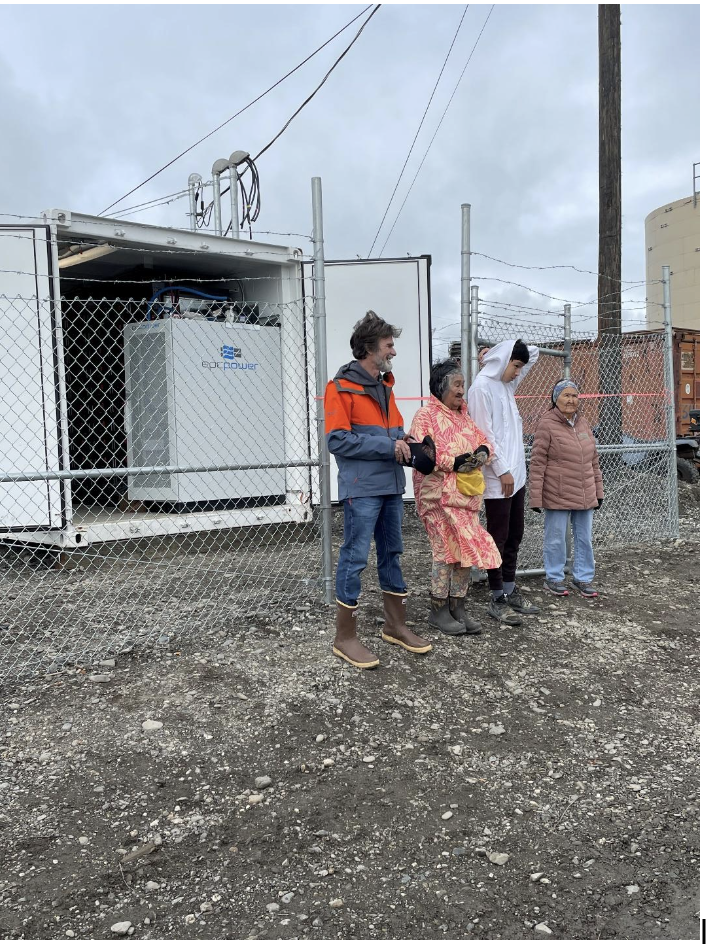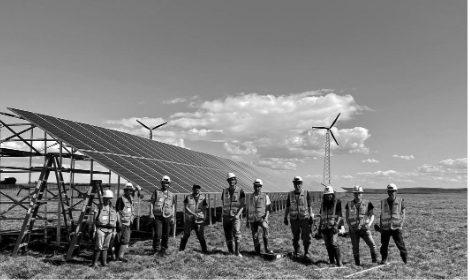
Did you know that despite the long days of darkness during winter, the solar resource in Alaska’s Northwest Arctic Borough (NAB), a county-equivalent regional government, is better than Germany’s?
Such is the case, according to Ingemar Mathiasson, NAB’s energy manager and a pioneer putting forth a new business model for independent power producers (IPPs) in rural Alaska. Working with indigenous tribes, he has helped bring many of the first significant solar projects in rural Alaska to fruition.
Designed to spur on renewable energy and other smaller generation resources to respond to large cost overruns (and rate increases) attached to large underperforming nuclear plants, the Public Utilities Regulatory Policy Act (PURPA) of 1978 created IPPs.
Most IPPs generate profits for private shareholders. Not always so in Alaska.
Due to a subsidy for rural Alaska known as the power cost equalization (PCE) program that assumed the state’s 200 or so remote microgrids would continue burning diesel to generate electricity, Mathiasson came up with a fresh approach. The PCE program averages energy costs between urban areas served by the Railbelt transmission system (see map below) and the remote community microgrids scattered across the state to make electricity more affordable to utilities that can be as small as just 70 people, such as Igiugig.
“Many of Alaska’s rural utilities are losing millions of dollars every year because they decided to become part of the energy transition,” Mathiasson explained.
A light bulb went off in 2020 when Ingemar realized that if an outside entity — such as a tribal organization — developed a renewable energy project, the PCE levels for the utility would be preserved since the displacement of diesel fuel would not reduce utility PCE state subsidy levels. Tribal IPPs could be non-profits and recirculate the revenues generated from the sales of renewable energy to the host utility’s customers, thereby maximizing the economic value of both state government endowments (i.e., PCE) as well as the revenue streams (and diesel savings) that renewable energy can provide.
Listen to Peter Asmus and Lisa Cohn discuss how microgrids have evolved in the Energy Changemakers podcast, “Microgrids Aren’t What They Used to Be.“
He pointed to a recent solar PV project in Shungnak-Kobuk, which became the first tribally owned solar IPP project in Alaska in 2022. It received both the Solar Project of the Year award and also the Most Equitable Community Solar Project in the U.S. award for bringing value back to the community. Within one year, this IPP generated $120,000 in revenue for the tribe. Since then, two more IPPs – one in Noatak in 2023 and another in Deering in 2024 – have been established with all the other communities in the Northwest Arctic to follow suit with federal funds NAB already received from the Biden Administration. (See picture below of Mathiasson standing at the left alongside local tribe members.)

IPP Business Models Continue to Evolve and Test Regulatory Limits
The non-profit independent power producer model is so appealing that new variations are being pursued in Alaska to provide additional value to small, remote villages with very limited cash economies and ability to pay for infrastructure by the Alaska Native Tribal Health Consortium (ANTHC), an organization that has already completed energy-related projects in 184 of the state’s 209 remote communities. ANTHC is helping the remaining three dozen or so “first service” communities with free technical assistance to install water and sewer services in the most affordable way possible. These first-service communities currently still lack plumbed water and sewer systems. Without creative complementary infrastructure augmentations, these upgrades would create high water and sewer bills ranging from $250-$450 a month for those who can least afford it — and who never had to pay for such a service in the past.
By incorporating solar PV and battery energy systems from IPPs created by tribes and/or municipalities, these new costs could be mitigated. The projects being assisted in the development process by ANTHC include an expansion of wind capacity in Kotzebue, which hopes to leverage an IPP owned by a local tribe to generate $900,000 in revenue annually that could fund both a water/sewer thaw-out program and social programs for low-income tribal members. A proposed 1-MW wind and battery project for Hooper Bay is estimated to generate $558,000 in net revenue under the tribal IPP model, providing an estimated $3,824 for each of the community’s 146 residential households.
Alaska has lagged the rest of the U.S. in shifting to the private sector for development of new electricity supplies. The Trump Administration’s deep cuts in federal funding, such as the Inflation Reduction Act (IRA) incentives, are therefore having a big impact, jeopardizing the projects described above.
“A wholesale repeal, or the termination of certain individual credits, would create uncertainty, jeopardizing long-term project planning and job creation in the energy sector,” Senator Lisa Murkowski of Alaska wrote to the Senate majority leader along with three other GOP colleagues. Solar projects planned for Alaska’s Railbelt grid have already been stalled or canceled due to lack of IRA incentives, the New York Times reported.

Katya Karankevich, rural energy manager for ANTHC, supports bringing in the private sector in creative ways into the Alaska energy market. Yet she is quick to point out that villages need to meet certain thresholds to be attractive to private investors. For example, they would have populations of at least 2,000 people — which is larger than 90% of the rural villages in the state — and ideally feature mining, oil and gas or fishing industries to support local economic development.
She gave this example of why smaller projects financed with private capital can be challenging. In a village with a population of 700 people, she investigated tapping private capital for a 20% match funding for a solar farm. Using private instead of public matching funds would have doubled the payback period from 20 to 40 years, diverting $150,000 from potential community benefit to private profit for the lenders. Performance risks and difficult logistics attached to renewable energy projects in Alaska typically demand a premium in private financing markets.
Some red flags for non-profit independent power producers model
While one must admire the chutzpah of the ANTHC approach to IPPs, Mathiasson sees some red flags.
The oversizing of renewable projects as well as subsidizing water and sewer services may run afoul of the Rural Electric Cooperative Association’s traditional focus on just meeting the current need for electricity services for residents.
“The ANTHC approach faces a few critical issues. One issue is how the benefits are allocated, whether on a community-wide basis or at the individual household level. Lowering the costs per household to the 10 to 15-cent/kWh range raises issues for other communities who will be paying more with or without any renewable energy supplies,” he said. “The water and sewer services that would be subsidized by the renewable IPPs would also benefit commercial customers and schools, which do not receive PCE benefits,” which he maintained could be another red flag.
He admires the creative approach but prefers a simpler IPP model that has already passed regulatory muster.
Time will tell if the ANTHC’s aggressive innovation push will succeed.
In either case, can the non-profit IPP model being deployed in Alaska be transferred to other jurisdictions in other emerging economies? A great question that certainly deserves a deeper examination.
Peter Asmus is the president of Pathfinder Communications.
